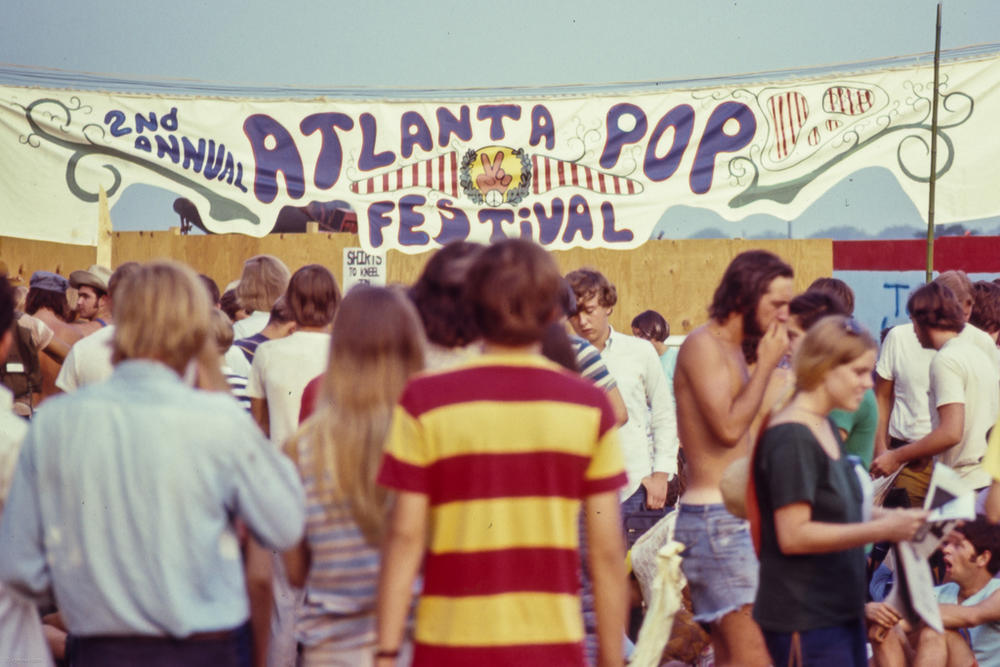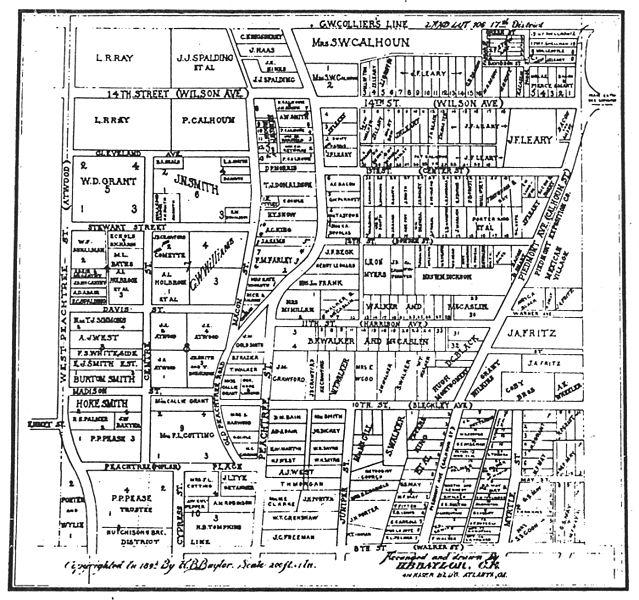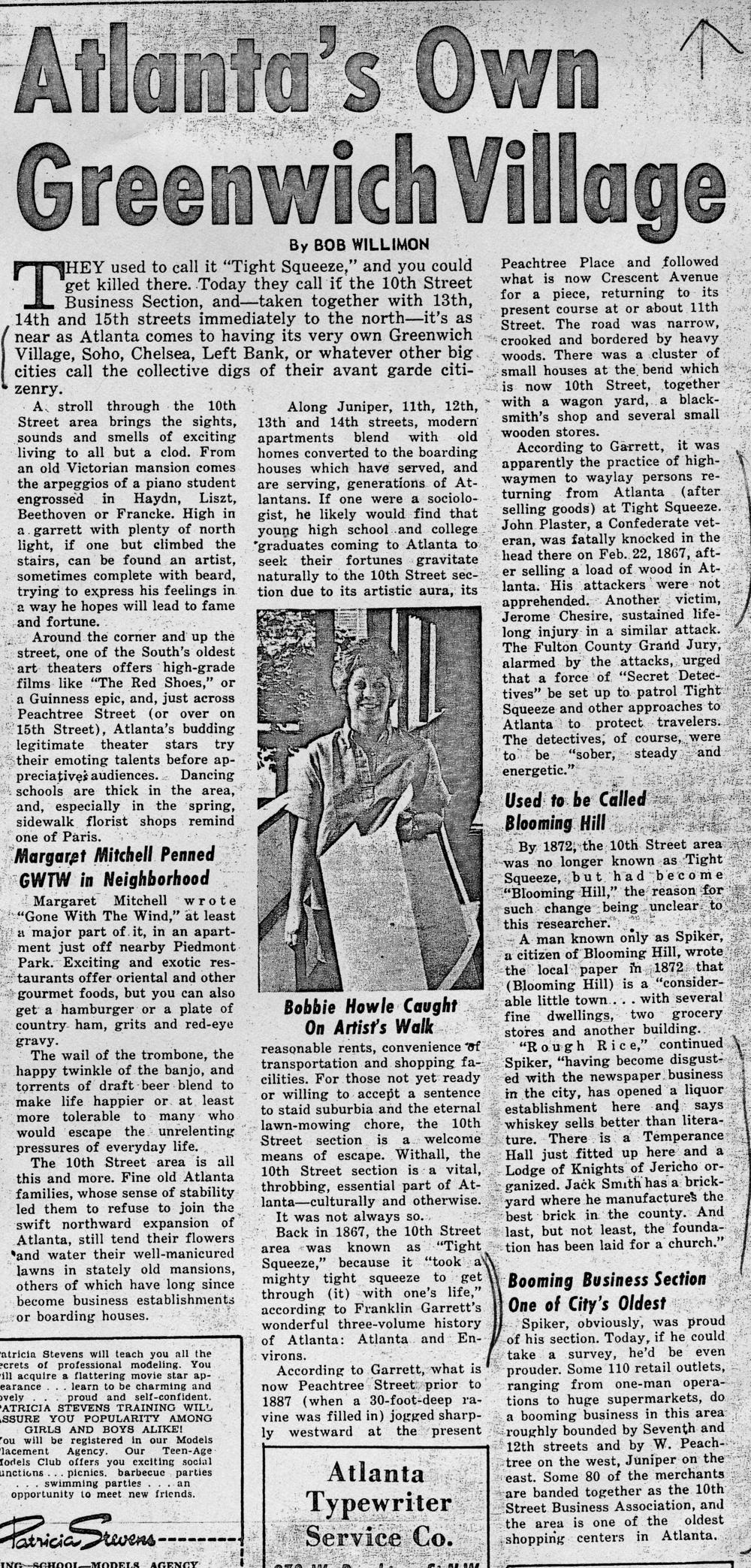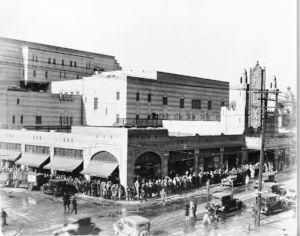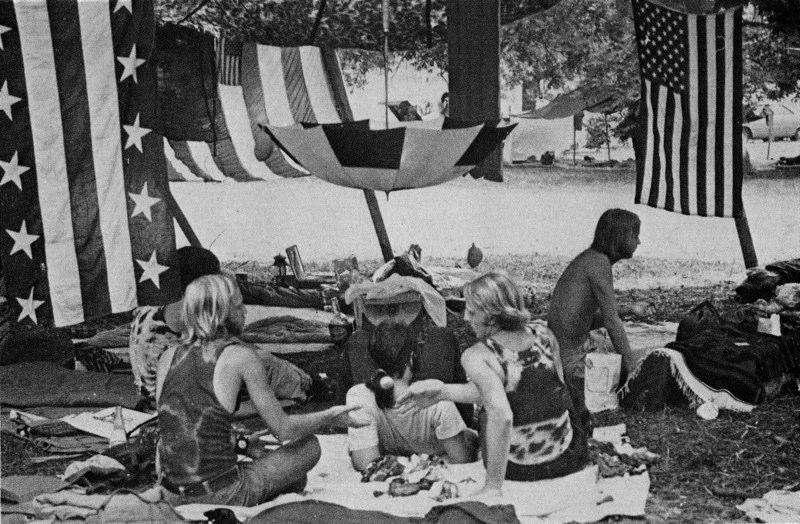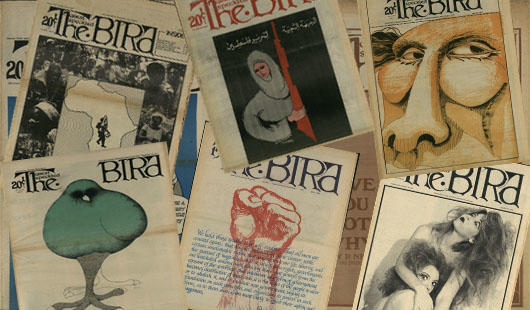Section Branding
Header Content
What's In A Name? | Tight Squeeze
Primary Content
Atlanta once had a neighborhood called Tight Squeeze. My colleague, Don Smith, suggested we check out this part of town that he remembers as the hangout spot for hippies in the 1970s.
Rickey Bevington details the colorful history behind a stretch of Peachtree known as Tight Squeeze.
According to Volume I of Atlanta historian Frank Garrett's anthology "Atlanta and Environs," the name goes back to the very earliest days of Peachtree Road. When the Civil War ended in 1865, the city went through a desperate time. Many people were left penniless and in need of jobs and homes. A ragtag group of freedmen, Confederate veterans and morphine addicts formed a small shantytown on a bend in Peachtree Road. At that point, the road curved to avoid a deep ravine near what we now know as 10th Street.
When Peachtree Road was straightened in 1887, the gully was filled in. You can still see signs of it today: if you stand at 10th Street and Peachtree (now Street), you can see a big dip to the northeast. The massive parking lot that's there now used to be the dangerous area called Tight Squeeze.
Over 150 years ago, merchants heading south to Atlanta had to slow down as they passed this bend. This left them vulnerable to highwaymen and the shantytown's residents. They robbed the stalled wagons and sometimes murdered the passing merchants. Travel along that stretch of Peachtree grew so perilous, a Fulton County grand jury decided to set up a secret detective force to patrol the area and protect travellers. The area was so dangerous it “took a mighty tight squeeze to get through with one's life.”
In the decades following Reconstruction, Tight Squeeze became Atlanta's first urban renewal project. By the 1920s, the area around 10th Street had grown into center for art, dance and theater. The Sunday Times Observer called it the city's very own Greenwich Village.
Atlanta's high society flooded the ritzy shops. You could even spot author Margaret Mitchell drafting "Gone With The Wind" at the popular Roxy Deli. In 1926, Mrs. Joseph M. High donated her family residence at 16th Street to become the home of the Atlanta Art Association (it later was renamed the High Museum of Art). Together with the opening of the Fox Theatre just a three years later at 3rd Street, these establishments fostered a blooming arts and culture scene that Garrett called "Tenth Street's Golden Era."
By the 1960s, the community had grown more Bohemian. These less conventional locals renamed the scene "The Strip." According to the Strip Project, a website on the history of Atlanta's hippies, it welcomed funky coffee shops and hippie stores.
The area was the home of the counterculture Atlanta newspaper, "The Great Speckled Bird." The paper was published from 1968-1976 and gained widespread acclaim in the South: it became one of the Georgia's most widely read newspapers. Atlanta Magazine said it had more than 27,000 readers at its peak. It was a "a tool for mobilization, a civic rallying cry, a chronicle for news that the mainstream media chooses not to cover, and, above all, an outlet where anyone can have a voice."
After "The Bird," as people nicknamed it, stopped publication in 1976, the neighborhood began to harden. Over the next decade, drugs, prostitutes and strip clubs moved in.
Over the past century-and-a-half, this half-mile strip of Peachtree Street has told many stories. What started as a death trap for traveling merchants is now home to what Bloomberg Businessweek called "the most valuable piece of developable land in the South." Today, its known for luxury hotels and bars like Loews Atlanta and the Four Seasons.
Click here to find more stories behind curious Atlanta names from our summer 2018 series "What's In A Name?" on 88.5 GPB Atlanta’s All Things Considered.
